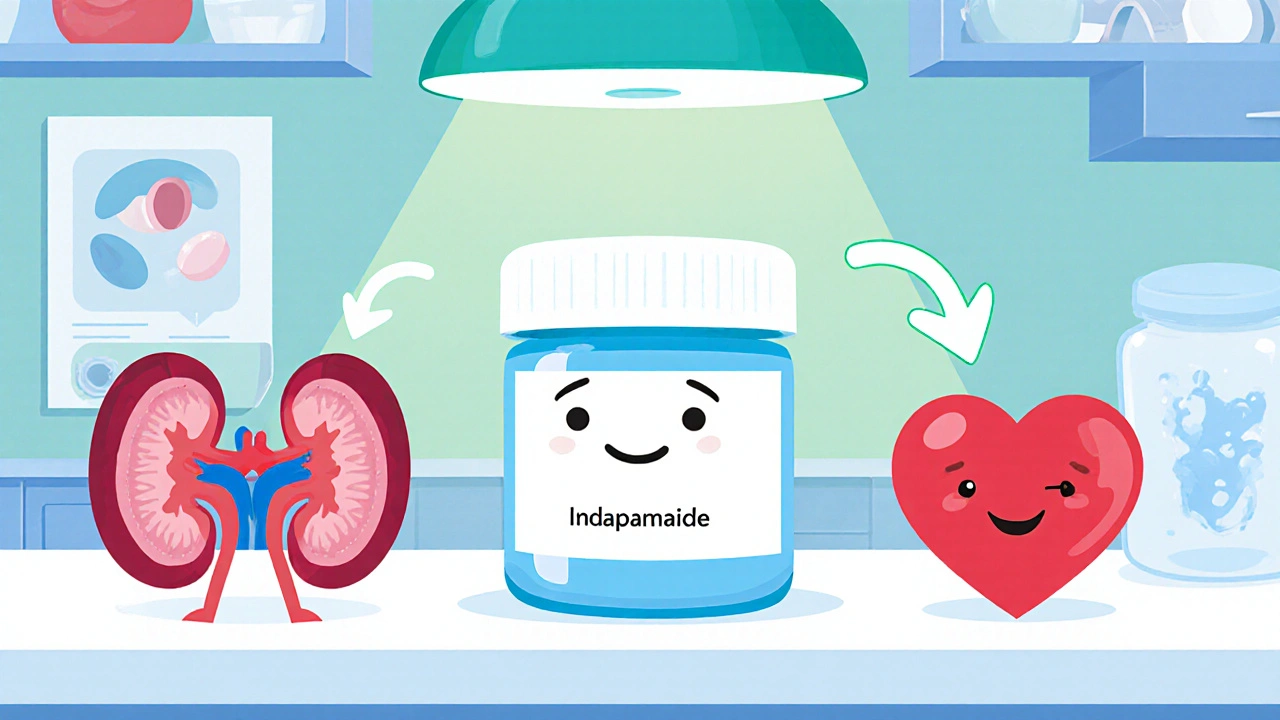When dealing with indapamide risks, the potential side‑effects and safety concerns linked to the diuretic indapamide. Also known as Indapamide adverse effects, it matters for anyone using this blood pressure medication.
Understanding indapamide risks starts with the drug itself. Indapamide, a thiazide‑like diuretic that lowers blood pressure by reducing fluid overload belongs to the broader class of thiazide‑like diuretics, agents that act on the distal tubule to promote sodium and water excretion. Because they push extra fluid out of the body, these drugs often trigger electrolyte imbalance, a disturbance in potassium, sodium, magnesium or calcium levels that can affect heart rhythm and muscle function. The central idea is simple: indapamide risks encompass electrolyte imbalance, low blood pressure and kidney stress. In practice, that means a patient may notice muscle cramps, dizziness on standing, or a sudden spike in uric acid leading to gout. The drug’s ability to lower blood pressure also creates a risk of hypotension, especially when combined with other antihypertensives. Monitoring kidney function is another must‑do because reduced perfusion can worsen existing renal issues. These relationships—drug class, side‑effects, and organ monitoring—form the core safety web you need to navigate.
One of the most common complaints is low potassium, or hypokalemia, which can cause fatigue, weakness, and dangerous heart arrhythmias. Since indapamide increases urinary potassium loss, doctors often recommend a potassium‑rich diet or a supplement. Another frequent issue is dehydration: the diuretic effect can strip the body of water faster than you realize, especially in hot climates or during intense exercise. Dehydration amplifies the risk of orthostatic hypotension—feeling light‑headed when you stand up quickly. For people with a history of gout, indapamide may raise serum uric acid, sparking painful joint attacks. Less talked about but equally important is the drug’s impact on blood sugar; some patients notice higher glucose levels, which matters for those with diabetes. Regular blood tests covering electrolytes, kidney markers (creatinine, eGFR) and uric acid give a clear picture of how the medication is affecting you. If any values drift out of range, your prescriber can adjust the dose or switch to a different class, like an ACE inhibitor or a calcium‑channel blocker, that carries a different safety profile.
What you should keep in mind is that indapamide risks are manageable when you stay informed and proactive. Track your weight, watch for swelling or sudden weight loss, and note any muscle cramps, tingling, or unusual fatigue. Keep a simple log of blood pressure readings and share them with your healthcare provider during check‑ups. If you’re on other drugs—especially other diuretics, NSAIDs, or potassium‑sparing agents—let your doctor know, because drug interactions can magnify side‑effects. By understanding how indapamide interacts with electrolytes, blood pressure, and kidney function, you empower yourself to catch problems early and keep treatment on track. Below you’ll find a curated set of articles that dive deeper into each of these topics, offering practical tips, warning signs and guidance on when to seek medical advice.
Posted by
Paul Fletcher
9 Comments

Learn the full range of Indapamide side effects, from common to rare, how to manage them, and when to seek medical help.
read more